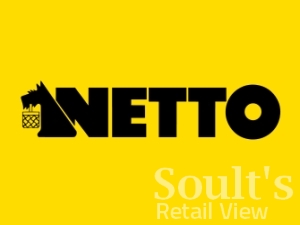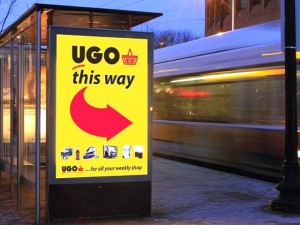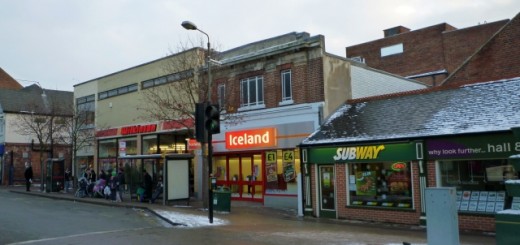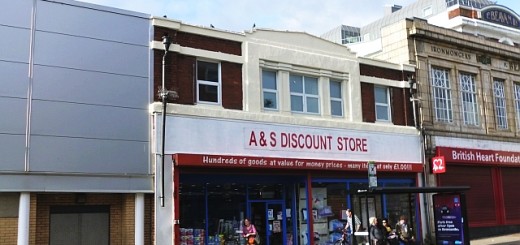Haldanes pledges that UGO will be “the icing on the Netto cake”
Following my recent post about Asda’s divestment of 39 surplus Netto stores, I had the pleasure of being invited to my first press conference last Friday, in Leeds.
Appropriately held just a short distance from Asda’s corporate HQ, the event was organised by Haldanes, the fledgling independent grocer who, as I blogged before, is acquiring 20 mid-size Netto supermarkets – including four in the North East – that it plans to relaunch under a new discount fascia, UGO (pronounced You-Go, like the 1980s car brand).
The press conference was a great opportunity to find out more about Haldanes’ intentions for the fledgling UGO chain and the eponymous Haldanes fascia, as well as a chance to meet some of the company’s key people – including Arthur Harris (Chief Executive Officer), Richard Collins (Chief Operating Officer) and Adam Hart (the recently appointed Non-Executive Chairman).
So, what can we look forward to as Haldanes takes its next steps towards becoming, in its own words, “a viable alternative to the major multiples”?
Certainly, when I coined the phrase “son of Netto” to describe UGO, I hadn’t quite banked upon the chain’s visual identity being so derivative of what it’s replacing. Scottie may have been banished, but the yellow and black colour scheme, bold font and (modernised) basket device are all present and correct.
Haldanes’ argument is that by capitalising on what it sees as the “distinctive and trusted” yellow and black Netto fascia, the UGO brand will provide “reassurance” and a “seamless transfer” for customers. Indeed, COO Richard Collins told me that Netto had been “very supportive” during the process of developing the UGO visual identity, and that the Danish retailer had been “surprised but flattered” by the obvious similarities with its own brand. Of course, given that Netto is exiting the UK entirely, there will be no scope for confusion between the two chains – unless UGO decides to enter the Danish market at some point in the future.
Throughout the press briefing, one thing that came across strongly was Haldanes’ respect for the Netto business and what it has achieved in the UK to date, with Richard Collins praising the “loyal staff and customers”, and emphasising Haldanes’ “excitement” over the portfolio of stores that it is acquiring. Certainly, it’s worth noting that Netto’s British operation has been consistently profitable over the last decade (making an operating profit of £7.6m in 2009), even if its operating margin (of around 1%, compared to Asda or Morrisons’ typical 4 to 5%) has been a little on on the low side.
This sense of not messing too much with the Netto formula comes through not only in UGO’s brand identity, but also in terms of what the rebranded stores will be like as places to shop, and the marketing channels that will be used. Hence, Haldanes has no intention of increasing prices, plans to keep Netto’s popular non-food and ‘spot line’ deals, and intends to maintain a strong fresh food offer – something the retailer sees as a current strength of Netto compared to the other hard discounters. The regular offer flyers delivered to nearby homes are also set to be retained.
At the same time, Haldanes’ bosses seem to have recognised that there is scope to increase footfall, sales densities and profits by tackling those areas where the Netto business model can be enhanced – what Richard Collins referred to as “putting the icing on the Netto cake.”
The checklist of planned improvements seems logical and well informed. Some involve making it easier for customers to carry out a full weekly shop: for example, by doubling the core range of branded traditional grocery lines to around 3,000 SKUs (compared to about 7,000 in a typical Haldanes); introducing an enhanced range of health and beauty products; and offering a full range of newspapers and magazines.
Other changes are intended to address barriers that might currently put shoppers off going to Netto, such as installing ATMs at all stores, accepting credit cards, offering home delivery, and investing heavily in customer service. The scope for offering additional services, such as BrightHouse-style consumer credit, is also being explored.
Marketing activity – led by the Darlington-based agency Charles Hollywood – is also set to be beefed up, including a campaign featuring the famous strongman Geoff Capes (“due to the strength of the UGO deals”), a rugby league sponsorship deal, and seemingly infinite scope for UGO-related messaging puns.
Against the backdrop and excitement of the UGO launch, the lack of any new Haldanes-branded stores since early 2010 has understandably raised questions among commentators about the future of the eponymous fascia, particularly following the news that one existing Haldanes store (in Biddulph) will shortly be converted to the UGO brand.
However, CEO Arthur Harris was clear that the company’s long-term strategy is based around running three separate and “very important” fascias – UGO, with its discount offer; Haldanes, seen as a market town mid-size supermarket format; and a new convenience and forecourt chain, Haldanes Xpress.
The Biddulph shop, he explained, is a location where a large Sainsbury’s has recently opened nearby, and where the company sees a UGO store as being able to compete more effectively than a Haldanes. He also pointed out that the conversion will allow the full UGO fitout to be trialled before it is rolled out to the acquired Netto stores – a process that is expected to involve stores being shut for only 14 trading hours, and will see all 20 shops transformed over a six-week period between mid-March and the end of April.
Harris refused to be drawn on how much Haldanes had paid for the 20 stores, but revealed that the cost of refurbishing and converting them to the UGO brand would be around £2m in total.
Following the company’s recent purchase of a petrol forecourt in Scotland, and of a post office and convenience store next to the existing Haldanes shop in Tattershall, Lincolnshire, Harris also confirmed that the firm is in advanced discussions to purchase eight convenience stores that will be rebranded under the Haldanes Xpress fascia. An announcement on this acquisition is apparently expected within the next two to three weeks.
Additionally, the business is already looking at picking up a couple more stores for UGO in Leeds – not, it would seem, among the eight Netto stores that Asda still needs to divest. However, Haldanes hasn’t ruled out acquiring one or two more stores from the OFT disposals list in the coming months.
For the moment, indeed, it seems that the Haldane Group is set to continue growing by acquisition. In response to my question, Arthur Harris said that there were no immediate plans for any new-build stores, but that it was certainly something the business would hope to achieve in the future. As the business expands, he revealed that private label products, a groupwide loyalty card and a dedicated supply chain are all likely to be on the cards. For now, however, the company’s focus would understandably be on “bedding down what we’ve got.”
Given the painful and drawn-out demise of the last big British food discounter – Kwik Save – many of whose stores were in comparable locations to UGO’s, you could be forgiven for questioning the wisdom of Haldanes’ move into a similar market. Towards the end, however, Kwik Save’s flaws typically included dowdy stores, unremarkable customer service and prices that weren’t actually all that cheap – all pitfalls that the UGO team seems to recognise, and be keen to avoid.
Rather, a better comparison is probably with those family discount chains, such as Heron Foods and Farmfoods, that have grown up somewhat below the radar into successful and profitable grocery businesses. Up against stiff competition on several fronts – the big four supermarkets, Iceland, and the hard discounters – both have become successful through a steady process of store openings and acquisitions, and by giving customers want they want: keen prices, decent quality products, and clean, bright stores in convenient locations.
If UGO is able to mesh these same qualities with what promises to be its own distinctive – and hopefully profitable – take on the discounter format, there’s every reason to think that the concept will be a success. As long as it avoids the Kwik Save recipe’s sticky mess, UGO might indeed end up being the very tasty icing on Netto’s partly-baked cake.


















Appropriately stationed near Asda HQ – I trust you have me to thank for that bit of local knowledge ;-)
It’s a great read though Graham including several things I’d totally neglected to mention, I’m interested to see how they grow the UGO chain long term, Netto tried several things but ultimately saw Lidl / Aldi steal a march with their ultra low prices backed up by the ultra low costbase and utilization of their German supply chain.
There is an ex Kwik Save in Harehills, Leeds that may be on their list but it’s landlocked by various Co-Ops, JS Locals and the like now.
You can’t take the credit this time Steve – I’d already spotted the Asda HQ before the press conference, as I walked back along the river from the Royal Armouries! ;)
There are still more empty Kwik Saves than you might think, aren’t there – I’ve photographed ones over the last eighteen months in Holyhead, Redcar, Felling, Berwick-upon-Tweed and Spennymoor, all of which remain vacant as far as I’m aware. However, when they’re rather decrepit properties in backstreet locations, there doesn’t seem much prospect of anyone else taking them on.